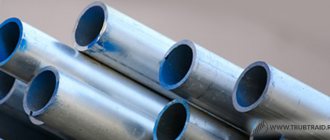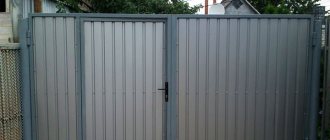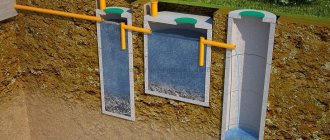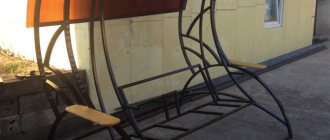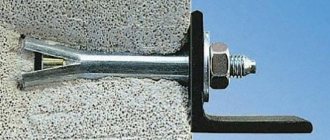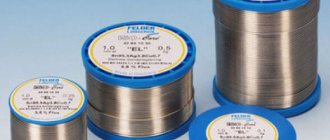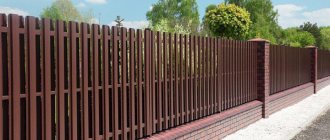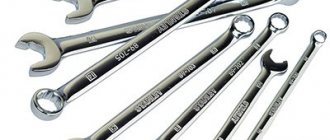A chimney chimney is a type of additional roof covering elements, which are additional parts necessary for the normal functioning of the roof. Similar elements also include snow guards, weather vanes, ventilation outlets, gutters and base deflectors. Each of the elements performs not only a decorative function, so you cannot do without them on the roof. The same applies to the chimney - an element that must be installed at the top of the pipe.
We advise you to study in more detail about the roof drainage system: “Organized or unorganized drainage for a home – which one to choose and why.”
What does a chimney look like on a pipe: design and dimensions
Modern chimneys for brick pipes have many different names. They are often called caps, umbrellas or weather vanes. The latter were originally intended to install a weather vane - a device that rotates under the influence of the wind. From a distance, chimneys look like small roofs. Most often in plan they have a square or rectangular shape.
Design of a classic chimney chimney
The dimensions of the chimney for a brick pipe depend on its dimensions. Experts note that the correct cap should completely cover the chimney. This means that along the perimeter the chimney should protrude beyond the pipe.
The dimensions of the chimney are determined by the type of chimney laying, since the cross-sectional dimensions depend on it. Based on the number and size of bricks, you can calculate the parameters of the pipe itself and use them to select a suitable cap.
Options for laying a brick pipe with dimensions
For safe operation of the roof, we recommend that you study in more detail: “Calculating the number of snow retainers on the roof.”
Where can you use a chimney?
- When installing home ovens. The chimney is suitable for houses heated with wood or peat, but here additional care must be taken to install spark arresters. They are made of stainless steel and are made in the form of a mesh with cells of 5x5 or 6x6 mm.
- For installation of fireplaces.
- When installing heating boilers. Smokers for flue pipes have a special ventilation hole that ensures the free exit of combustion products.
- When equipping the house with a ventilation system. In this case, the cap serves as the head of the ventilation pipes. It enhances draft and increases the efficiency of natural ventilation of the home.
Please note: spark arresters are also required if shingles, shingles, reeds or other flammable materials were used in the construction of the roof.
Chimneys on several pipes
Advantages and disadvantages
But when arranging chimneys, many owners doubt whether this element is needed or whether they can do without it. There are a number of arguments that support the importance of the node. These include the following:
- Reducing the likelihood of fire extinction due to wind exposure.
- Increasing the protection of the pipe structure from the penetration of debris brought by the wind.
- Preventing precipitation from getting under the chimney.
- Creating obstacles for bird nests.
- Noticeable increase in service life.
- Aesthetic appeal.
At the same time, experienced craftsmen claim that manufacturers’ statements about increased traction and improved efficiency are nothing more than a regular marketing ploy. As for the disadvantages of the chimney system, they are as follows:
- The design of the hood may prevent the free flow of combustion products. As a result, the thrust does not increase, but on the contrary, it decreases noticeably.
- Boilers with increased power heat water steam to a temperature of 120 degrees. Upon contact with cold metal, this steam turns into condensate and settles on the chimney, which is especially dangerous during the cold season, when frozen icicles form.
- If there is a chimney, the pipe itself must be supplemented with a special collector for condensate.
- The service life of galvanized steel products intended for solid fuel boilers does not exceed 3-5 years. To extend it, you will have to purchase expensive designs.
Differences from weathervane, umbrella, head and cap
Functionally, the listed elements and the chimney are completely different devices. They are often confused due to their similar appearance. But there are some differences in their functions:
- Wind vane. It is a special design that can rotate. Due to such movements, the weather vane accelerates the air near the pipe, preventing it from getting inside and enhancing the removal of smoke from the pipe.
- Umbrella. Externally it is a cone-shaped cap. Used only for protection against rain and snow, intended for square and round pipes.
- Header. This is the name given to the complex of all elements installed on top of the pipe to protect it. These can be chimneys, caps, and trim.
- Cap. Brackets are attached to it, to which the protective elements are then fixed. The cap decorates and protects the neck of the pipe itself.
Purpose and principle of operation
So, a weather vane is installed on the chimney pipe to protect it from leaves, debris, rain or snow getting inside. If the design involves the presence of an additional grille on the sides of the canopy, it will become a reliable barrier against birds and small animals getting into the pipe. This is especially true for owners of dachas that are visited irregularly: during the absence of the owners, bird nests manage to appear in an unprotected pipe.
An umbrella for the exhaust pipe prevents the brickwork from collapsing under the influence of raindrops or melting snow. Corrosion processes are aggravated by smoke. Often, moisture getting inside the chimney settles on the soot, which contributes to the accelerated clogging of the chimney channel. Sometimes it overlaps completely. Protective structures eliminate this problem.
Another trouble that awaits unprotected chimneys is strong wind. Sometimes he blows smoke back into the stove, poisoning the air in the room. The phenomenon is called thrust overturning. The umbrella on the chimney is designed to solve this problem.
Improving traction occurs as follows:
- the smoky stream, emerging from the channel, rests against a canopy located at an angle;
- this air “stream” is forced to slide along the inside of the cap in order to go out, upward;
- This bending of gases around the visor causes a suction of smoke flow from the channel;
- a zone of low pressure is formed in the upper part of the pipe, where the smoke of a stove, fireplace or other heating device rushes.
This process increases the efficiency of the furnace by approximately 20%.
The chimney hood structure includes:
- a protective visor or cap that resembles a roof - it is this that protects the chimney duct from moisture, blowing, and debris;
- a drip apron or casing that is placed on the pipe, protecting it from dampness, combustion products, as well as drops that fly apart when falling on the structure’s cover;
- brackets - metal frames or plates connecting the apron to the umbrella.
The chimney cover is sometimes supplemented with nets or bird bars. Another optional element is the screen. It is located under the hood at a distance of 3-4 mm from the edge to protect the metal of the visor from the destructive effects of hot smoke. The screen absorbs all the heat of the smoky stream. This reduces the likelihood of the weather vane icing up in the cold season and reduces corrosion. It is usually made from stainless steel.
In addition to the protective function, installing a weather vane also has an aesthetic purpose. This design increases the attractiveness of the roof and gives the chimney duct a finished look. The house will become more noticeable and interesting if you complement the design with a beautiful weather vane or order a canopy of an unusual shape - for example, a firebird, a dragon, etc.
Functions of a chimney chimney
The chimney prevents hot air from getting back into the chimney and prevents icicles and ice from appearing on the chimney. When installed on ventilation ducts, the device provides intensive air exchange. What other tasks does the chimney perform:
- Provides protection from rain, hail and snow. A large amount of moisture can literally “lock” the draft.
- Protects the brick pipe from destruction due to exposure to precipitation. To do this, the hood is equipped with grooves to remove condensate that forms on the metal surface due to contact with hot smoke or air if the smoke hood is installed on a ventilation duct.
- Prevents foreign objects from entering the chimney, as well as small animals or birds, which often weave their nests in such places.
- Increases traction. For this, both regular caps and special deflectors (aerodynamic caps) are used. They allow you to increase traction by about 20%.
The decorative function of chimneys should not be underestimated. They help complete the appearance of the chimney and the house as a whole, complementing the design of the roof.
Unusual chimney for a pipe
Please note: the chimney is very important in ensuring the safety of your home. Due to foreign objects entering the pipe, the free flow of air is stopped, which leads to the spread of smoke and carbon monoxide indoors. This is fraught with serious poisoning of the body and even more tragic consequences.
How does a deflector work?
A deflector is an aerodynamic device that works due to the Bernoulli effect, known in the field of aerodynamics. The cap on top of the chimney divides the air flow and thereby creates vortex currents. As a result, a zone with low pressure is created near the exit from the pipe, and air always tends from an area of high pressure to an area of low pressure. As a result, there is an increase in traction.
Structurally, the deflectors consist of 2 cylinders: the upper one in the shape of a truncated cone and the lower one. The smoke, depending on the direction of the wind, comes out into the upper or lower channel. The deflector is also protected from above by a cap.
Please note: even a regular cap helps increase traction. But deflectors, being specially designed to increase traction, give a more significant effect.
What types of chimneys are there depending on their shape?
The variety of shapes of modern chimneys is very large. Here you can find almost any options. Let's look at the most popular of them, which have an unusual geometric shape and can decorate any pipe:
- a weather vane of a standard shape: it looks like a house with a hipped roof;
- chimney in the Art Nouveau style: designed like a standard one, but additionally has a flat top;
- European style chimney: has an unusual appearance due to the semicircular top;
- caps with a gable roof, which has four slopes (a very functional design that is well ventilated and at the same time protects the pipe from snow);
Cap with gable roof.
- weather vane with weather vane;
- weather vane equipped with a detachable lid.
Wind vanes with a weather vane are distinguished by the fact that a special damper is located inside the structure, allowing combustion products to calmly exit the chimney even in the windiest weather. And an additional opening lid provides easy access to the chimney channels for cleaning.
Depending on the shape, chimney roofs are divided into the following categories:
- tent;
- gable;
- hipped;
- semi-cylindrical (or vaulted);
- flat;
- spire-shaped;
- four-pincer.
However, in most cases, this parameter does not affect the functionality of the device and serves solely for aesthetic purposes, providing the chimney pipe with a unique appearance.
The chimney is an important element of the smoke removal system in the house.
Types of chimneys for pipes
From the photo of chimneys for brick pipes you can see that these accessories can have different shapes:
- tent,
- two- or four-slope,
- flat,
- semi-cylindrical,
- spire-shaped
- four- or multi-pincer.
Important: flat chimneys are rational to use in warm climates where there is no precipitation in the form of snow. Such caps are more suitable for installation on flat roofs.
Types of chimney smoker
Chimneys also differ in their overall configuration. The following caps are found on the market:
- Standard. Traditionally they consist of the cap itself and the skirt element, which is necessary for fastening. Suitable for almost all chimneys, including false pipes, therefore they are used more often than other types.
- With protective grille. They differ from previous models by the presence of a metal mesh. Suitable if the fireplace or stove is used very rarely. In this case, the grate will protect the pipe from birds that could build a nest in it, as well as from debris.
- With a hinged lid. Facilitates the process of cleaning the chimney from soot and repairing the chimney.
- With increased traction. To increase traction, the device can be equipped with a double lid or a forced draft function. Such chimneys are installed where enhanced exhaust air removal is required.
Common models of chimneys
- Universal pitched.
A pitched chimney is the most common and simplest option, suitable for both chimneys and ventilation pipes.
Universal smoke vent
- With outlet for fireplace or boiler room chimney.
It has an open design with an additional free outlet for exhaust gases.
Cap with outlet for fireplace or boiler room chimney
- With closed outlet for fireplace or chimney.
Unlike the previous version, it has a closed free outlet for exhaust gases. Suitable for installation on boiler pipes.
Weather vane with closed outlet
- Gable shape.
The gable smoke vent looks very original. Suitable for barbecue pipes or summer kitchens, for square-section fireplace and stove chimneys. In addition to an interesting design, it is characterized by good ability for through ventilation.
Gable-shaped chimney
- With a semicircular pommel.
The top of the weather vane is made from a sheet of metal that has been bent to form a half-cylinder shape. This configuration provides maximum through ventilation around the perimeter and at the ends. Well suited for pipes with a rectangular plan.
Semi-cylindrical chimney
- Angular.
The weather vane can be made with any number of sides at the base. In addition to L-shaped ones, there are also T-shaped caps.
Corner chimney
- Pagoda.
One of the most sophisticated and attractive shapes with curved radial edges. Particularly relevant in the presence of other roofing decor.
Dymnik-pagoda
- Gothic.
Perfectly complements roofs that have spiers or towers.
Dymnik-gothic
- Aeration, or two-level.
This is a current solution for pipes with problematic draft. Due to the second tier, the weather vane provides additional support for the smoke under the hood, and thanks to through ventilation, exhaust gases are easily removed from the chimney.
Aeration chimney
A special variety - smoke vane
One of the varieties of the chimney is a weather vane, which, in addition to the cap, is also equipped with a top in the form of a flat element made of thin metal. The decorative element of the weather vane not only shows the direction of the wind, but also increases draft by directing the smoke to the leeward side.
The weather vane rotates due to a bearing, which periodically requires lubrication. Being decorative, the element can be made in a variety of forms - in the shape of an eagle, dragon or falcon head, etc.
Operating principle of a weather vane
Do-it-yourself smoker
As mentioned earlier, the design of the chimney is not complicated, but if you have never done this, you may encounter some difficulties in manufacturing. If you do not have experience, then it is worth making a very detailed drawing of the design that you want to get in the end.
The drawing should be transferred to cardboard of a certain size. Next, all the parts need to be cut out, a cardboard model of the chimney should be folded, while thinking through all the methods of fastening and connecting.
Once you understand the sequence in which to assemble, you can begin making the metal cover. Let's look at a few simple manufacturing examples:
Vaulted chimney
To make this design, you won’t need a lot of materials, as it is quite simple. Prepare 4 racks and a small sheet of metal of the required size, bent into an arc.
Scheme of a vaulted chimney for making it yourself
The manufacturing stages are as follows:
- You need to cut a rectangle from a sheet of metal so that when bent it completely covers the top of the pipe. Do you want your smoker to be unusual? Make trapezoidal cuts at the same distance from each other on the long opposite edges.
- Prepare 4 pieces of racks from angle or roofing steel. At the ends that need to be bent into an L shape, you need to make mounting holes.
- Prepare a metal rectangle from the same corner.
- Attach the posts to the rectangle with rivets. Attention! The distance between the posts must be equal to the dimensions of the chimney clearance, otherwise it will not be possible to install the structure correctly.
- On a curved metal sheet, we bend the cut elements at right angles in opposite directions, and fasten it to the racks.
- We install the chimney in the chimney and secure it to the masonry using large pins.
Now you can admire the decorative element on your pipe. If desired, this design can be decorated with a figurine of a cockerel or squirrel, carved from the same metal.
Tent chimney
This is a pyramid, which is made up of 4 identical triangles. Making it yourself is not difficult. The smaller the base of the isosceles triangle, the steeper the roof of the cover you will get.
Drawing for making a tent smoke vent
Just like in the first case, we make a drawing, which we transfer to cardboard and cut out the layout. This way you can not only accurately adjust the cover to the pipe clearance, but also adjust the slope of the roof at your discretion. Installation steps:
- We cut out triangles from metal using iron scissors, but we must not forget to leave a centimeter edge.
- You need to hammer along the edges of the edges with a mallet so that the material bends well. These actions must be performed on all four triangles.
- We bend the edge at an angle of 90 degrees.
- We join the triangles along the edge and forge them on a workbench. To obtain a more reliable connection, wire can be forged in the seam.
- Next, we make 4 racks from a corner or pieces of sheet iron.
- We drill holes for fastening along the edges of each rack.
- We attach racks to each corner of the pitched roof of the chimney using rivets.
- We fix the racks in the chimney opening of a private house using pins or large nails.
If you have enough knowledge and skill, then such a chimney can be decorated with a stork weather vane.
Cone smoke vent
This design is well suited for an iron stove pipe. The work process is as follows:
- You will need a compass, with which you will need to draw a circle on a sheet of cardboard with a diameter larger than the lumen of the pipe.
- Then you need to cut a small segment from this circle, for example, equal to 1/12 of the circle, to obtain a cone.
- Fold the cardboard into a cone; if, in your opinion, it should be steeper, then you need to cut out a larger segment.
- Transfer the layout to the steel and cut out a circle, but we don’t cut out just a segment, we simply make a cut from the edge of the circle to the center. Bend the edges 90 degrees to join.
- As in the first case, the seam must be joined and forged well.
- Prepare 4 racks that are secured to the cone with rivets.
- All that remains is to install the chimney on the round pipe.
Various types of chimneys for a round pipe
Types of chimneys by material of manufacture
Depending on the material, there are the following types of chimneys:
- Copper. They have a long service life (about 50 years), during which they retain their original appearance. Over time, copper develops a patina, becoming similar to antique products.
- Steel. Not too durable - with proper installation and regular maintenance they will last about 10 years.
- Made from stainless steel. More durable than steel. Their service life reaches 30 years.
- Made of zinc and titanium alloy. As durable as copper. Serve for 50 years.
Copper caps are considered the most functional, but it is important to remember that upon contact with other metals, copper begins to actively oxidize, which is why it is destroyed over time. To prevent this, it is necessary to use fasteners made entirely or at least partially from copper.
A special group consists of forged chimneys . They have a particularly pronounced decorative function. Such products are often produced individually, including individual designs or personal sketches of the customer. In order for the element to fit into the architecture of the house, it is necessary that the forging have a pattern similar to the pattern on the wicket, gate or fence.
Note: if you plan to heat the house using wood, it is better to install an unpainted chimney. Under the influence of high temperatures, painted steel will quickly fade and become covered with a layer of soot.
Where to buy or order
If you are looking for where to buy a ready-made forged roof product or order its individual production according to your personal sketches, we suggest taking a look at the corresponding section of our blacksmith catalog. The section “Where to buy and order forged chimneys” contains companies offering items that are simple in design and original in execution. All products are of high quality, wide range and reasonable prices.
In conclusion, it is worth noting that forged caps last much longer than metal or galvanized ones due to the technical characteristics of forged metal. Thanks to the decoration with openwork elements, they give the buildings uniqueness and originality. If you want to draw attention to your home, be sure to install a wrought iron weather vane on your chimney.
Tips for choosing the right smoker
When choosing a smoke hood for a chimney pipe , first of all it is necessary to take into account not the aesthetics, but the functionality of the accessory. The following tips will be useful here:
- For regions with a lot of snow in winter, a chimney in the form of a small roller roof with a large slope is suitable. Snow comes off very easily from this design.
- In zones with cold climates, it is more rational to install wave-bending chimneys. The roof slope must have a slope of at least 40°.
- The cap must be selected taking into account its shape. For round ones, round umbrellas are suitable, for rectangular and square ones - in the form of small pitched roofs.
- For chimneys up to 5 m high, caps made of heat-resistant materials are more suitable: stainless steel or copper. They are resistant to oxidation, so they will last longer.
Please note: chimneys for sandwich chimneys must be equipped with a special skirt that will cover the insulation.
Deflector size calculations
Before you begin making a chimney deflector, you need to create a working drawing that will indicate all the dimensions of the device. And for this it is necessary to correctly calculate the height of the deflector, the diameter of the inlet pipe and the cap.
Special tables contain information on the dimensions of devices for standard chimneys.
size table
| Channel diameter (internal), mm d | Deflector height, mm N | Diffuser width, mm D |
| 120 | 145 | 241 |
| 140 | 167 | 280 |
| 200 | 241 | 400 |
| 400 | 481 | 800 |
| 500 | 600 | 1000 |
If you need to calculate the size of the device for a non-standard chimney structure, then you can use the generally accepted formula:
- Deflector height = 1.6 (1.7)×d.
- Cap width = 1.7 (1.8)×d;
- Diffuser width = 1.2 (1.3)×d.
d – internal diameter of the smoke exhaust channel.
Important! To obtain the required values, preliminary measurements of the internal diameter of the chimney pipe will be required.
Features of installing a chimney on a pipe
When installing the chimney, it is very important to ensure that it is securely fastened, since it must withstand strong gusts of wind. If the cap blows off, then at best it will damage the roof, and at worst it will lead to injury to residents or passers-by, since the structure itself is quite heavy.
For fastening you can use:
- Self-tapping screws and dowels - for pipes made of lightweight brick.
- Anchors – for a cap of large mass.
The chimney is fixed to the topmost row of bricks. At the first stage, it is necessary to prepare holes for screws or anchors. They are tapped directly into the cement joints of the masonry. It is better to do this according to pre-made markings. When the holes are ready, you can attach the cap itself. Before placing the dowels inside, it is recommended to dip them in cement mortar - this way they will be fixed more securely. After installing the dowels, all that remains is to secure the element with self-tapping screws.
Scheme for installing a weather vane on a pipe
What to pay attention to when installing
When installing smoke vents on the roof, you need to avoid placing the hood too low and keeping the visor close to the smoke outlet - this will reduce the draft. Small holes on the sides of the structure can lead to them freezing in winter and completely blocking the exit of exhaust gases. Freezing occurs if you heat a stove or fireplace with damp wood; when heating with gas, such cases are more rare.
If the structure is made weak or too small, it may fall into the chimney and block the chimney. This can lead to dire consequences. Especially with gas heating. The smoke of wood or coal is easily identified by smell, but when natural gas burns, it produces carbon monoxide (or carbon monoxide), which does not smell anything. It acts unnoticed - people lose consciousness, becoming increasingly poisoned.
For this reason, in Europe it is legally prohibited to install a weathervane for fireplace and stove pipes on the roof. There, these structures are permissible only for the exits of ventilation and sewer ducts, the clogging of which is unpleasant, but will not lead to death. There is no ban on chimneys in Russia, but for safety reasons it is better to trust the calculation of their sizes to professionals, or to carefully observe SNiPs.
If you make a cap from low-quality material, the smoke will quickly corrode it. Cheap galvanizing lasts no more than two to three years. Galvanized steel with a polymer coating remains unharmed much longer, and even longer - stainless steel and copper, although their price is higher.
If the ventilation and chimney are made as a single block, they are covered with gable caps so that snow can easily slide down the two slopes. In this case, the chimney outlets of boilers operating on gas or diesel fuel must be isolated from the ventilation outlets. In these cases, chimneys with additional channels are installed.
You should approach the arrangement of the chimney with the utmost thoughtfulness. In order for it to bring benefit and not harm, you need to comply with SNiPs, correct dimensions, and use reliable materials that can withstand aggressive environments. If everything is done correctly, the cap will improve the appearance of the house, optimize the chimney system and protect the pipe from destruction.
